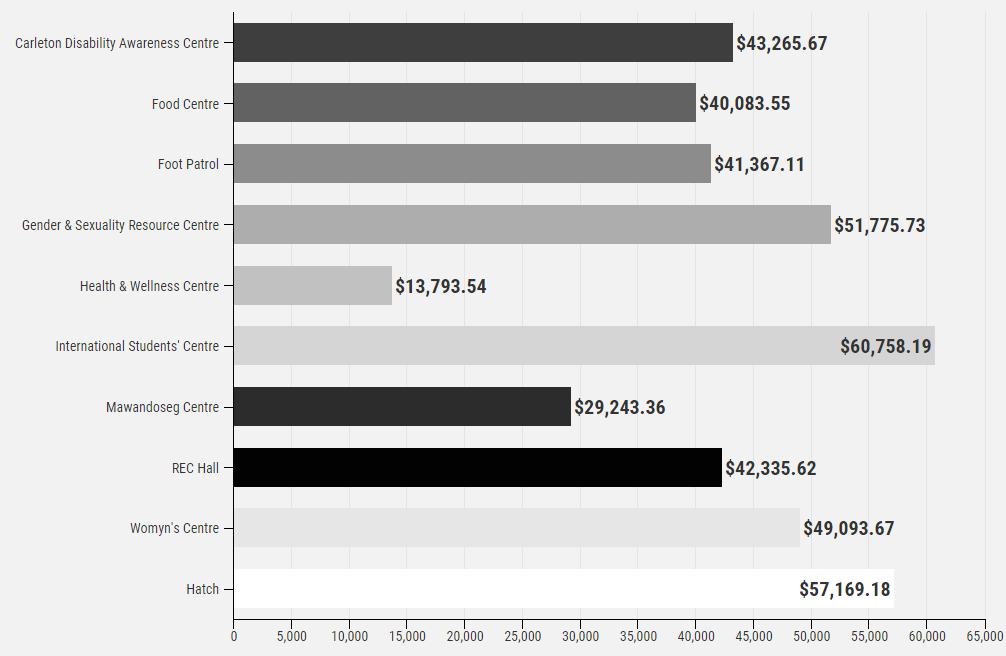Following the Carleton University Students’ Association’s (CUSA) decision to cut the designated office space for its Indigenous service centre in order to redirect the centre’s rent expenses to programming, The Charlatan looked into the future of CUSA’s other 10 service centres.
The centres serve various groups of students on campus by providing programming and support. Centres include the Womyn’s Centre, the Food Centre, and the Gender and Sexuality Resource Centre.
But, CUSA president Zameer Masjedee said that one of the problems with service centres is the lack of student awareness.
“There’s not one solution that’s going to fix this for us,” Masjedee said.
Kamil Bhatty is the administrative co-ordinator at CUSA’s Food Centre, an on-campus food bank and resource centre for student food security.
“When people find out that something like this exists on campus they are so surprised,” Bhatty said.
Going forward, Masjedee said that CUSA has a few long-term goals within a two to five-year timeline in regards to the service centres.
“One of the things we’ve sort of been toying around with was the idea of creating a centralized service centre location,” he said.
Céline Brown MacDonald, the administrative co-ordinator at the Carleton Disability Awareness Centre (CDAC), also spoke about the topic of the future for CUSA’s service centres.
She said that centralizing all the services into one area would be “embracing the intersectionality.”
“If we’re going to go so far as to investing all of this money [and to do] space revamps, we want to make sure we’re getting it right,” Masjedee said.

Alexis Oundo, CUSA vice-president (student services), said that over the past few years, budgeting for service centres has received a lot of support from CUSA council.
Although Oundo said she is not always able to accommodate every funding request from co-ordinators, she added that CUSA does its best to provide the centres with what they need.
According to CUSA’s 2016-17 budget, the 10 service centres with co-ordinators—excluding the Multi-Faith Centre, which has no co-ordinator and only costs rent expenses—total $428,885.62 in annual budgeted spending this year.
According to Brown MacDonald, CDAC’s budget was increased this year because the centre was over-budget last year.
Meanwhile, Bhatty said he believes the Food Centre’s budget meets its needs.
The Charlatan previously reported that CUSA had planned to move the co-ordinator of the Mawandoseg Centre into the Ojigkwanong Centre. Following backlash, CUSA is now rethinking its decision.
“It was a very miscalculated move,” Oundo said.
“No co-ordinators at this time have expressed concern about the future of their own office spaces. In fact, there seems a trend of co-ordinators coming up with innovative ways of attracting students and actually expanding their offices,” Brown MacDonald said.
When it comes to improving its service centres, Oundo said that it is important for CUSA to collect data on the number of students using each centre.
“If we know what they want, we know what to do [to provide that],” she said.
When it comes to the future of the service centres, Masjedee said CUSA will be implementing “score cards” for each centre to track how many students are using the centres.
Masjedee mentioned that the plan is to hopefully launch the score cards in the next semester.
Infographic by Mariam Abdel-Akher






